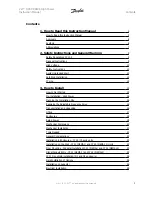
HV100 Series High Performance Current Vector Inverter
110
Figure 010-1 Motor overload protection curve
When the capacity of inverter is larger than that of motor, in order to implement valid overload protection for load
motors of different specifications, it is necessary to set the overload protection coefficient of motor reasonably as shown in
the following figure:
Figure 010-2 Schematic diagram of motor overload protection coefficient setting
The motor overload protection coefficient can be determined by the following formula:
Overload protection coefficient of motor = maximum allowable load current/rated output current of inverter × 100%
Generally, the maximum load current refers to the rated current of the load motor. Adjustment of protection value in line.
10.02
Undervoltage protection action selection
0
~
1
0
0: prohibited
1: allowed (undervoltage is regarded as fault)
10.03
Undervoltage protection level
220V
:
180
~
280V
200V
380V
:
330
~
480V
350V
Model setting
This function code specifies the allowable lower limit voltage of DC bus when the inverter works normally.
Notes:
When the grid voltage is too low, the output torque of the motor will be decreased. For constant power load and
constant torque load, too low grid voltage will increase the input and output current of inverter, thus reducing the reliability
of inverter operation. Therefore, when operating for a long time under low grid voltage, the inverter power needs to be
derated.
Time
Motor overload protection
coefficient
Current
1 minute
Time
1 minute
Motor overload protection
coefficient
Current
1 hour
















































